- Read part two from RAIL 773: Vivarail's grand designs
There have long been calls for more diesel multiple units (DMUs). And with the recent Invitation To Tender for the Northern franchise promising at least 120 new carriages and the phasing out of Pacers by 2020, those calls are going to start getting much louder very quickly.
Last year, the Long Term Passenger Rolling Stock Strategy said that rail would require fewer than 100 new diesel vehicles (not in the present decade). Now, the Government is talking of “a potential requirement for 350 to 500 non-electric vehicles, for a variety of urban stopping, rural stopping and inter-urban express services”.
It is no secret that there is a shortage of available DMUs, and increased pressure to replace the much-maligned Pacers means that the industry will need to find some units from somewhere.
But just what is going to reduce the shortage? And where are the Pacer replacements going to come from?
The man who ordered the last DMUs bought in the UK (the Class 172s for London Overground and Chiltern Railways) thinks he has a solution.
Adrian Shooter was chairman of Chiltern for 18 years (retiring in 2012), and has worked on the railway for over 40 years. But retirement has not been a relaxed affair for Shooter - he is now chairman of Vivarail, the company that has bought 156 Driving Motor Cars and 70 Trailers of retiring D78-Stock from the London Underground, to transform into DEMUs (diesel electric multiple units) for the national network.
What made Shooter decide to buy a ‘job lot’ of Underground trains?
“It didn’t all happen absolutely overnight. I had been aware for quite some time that there was going to be a big shortage of DMUs, having bought the last ones in this country. I know what they cost as well, which is a lot of money!
“So I could see that there was going to be a shortage, and got talking to a school friend of mine, Malcolm Dobell, who retired as a chief engineer at LU in September 2014.
“Malcolm and I went to school together, we ran a railway society. He was actually part of the engineering team when the D78s were ordered brand new, so he told me about them. He explained that the bodyshells were nearly all aluminium, and there is no corrosion on them. They’re as good as the day they came out of the factory in Birmingham, 30-or-so years ago.”
That was when Shooter enlisted the help of Neil Bates, director at Midlands-based Creactive Design, which (among other things) designs and develops railway vehicles. Shooter and Bates first worked together in 1996, when Bates designed the exterior livery and internal layout of Chiltern’s new ‘168s’. They worked together on the Mk 3s and ‘168s’, and several other things in between.
Says Shooter: “Neil took me to a strange Polish restaurant, and I think that was the day when I decided ‘right, stop messing about with this, let’s get on with it’.”
Were any other vehicles considered instead of the D-Stock?
“The only alternatives (and they were actually scrapped too soon for us) were the A-Stock (which has had a history of problems over many years, and contains asbestos) and the C-Stock, which again hasn’t been tremendously reliable. They have corrosion problems because they were aluminium on a steel frame, which is not good. They also have asbestos in them.
“Whereas the D-Stock, which is the only other sub-surface line stock that’s going to be scrapped for years and years and years, is devoid of corrosion, asbestos and fractures. Frankly, it was the only one that was practicable.
“At one point, these were going to be run for another ten years in London. In fact, LU had been doing reliability modifications on these trains until very recently.
“It’s a happy coincidence, that there is the availability of these particular trains from LU, when the previous ones were not suitable. So there’s that coincidence, with the fact that for ten years there is still going to be a requirement for more DMUs.”
The D-train concept uses only the bodyshells, bogies and traction motors from the D78 ‘donor train’ - everything else will be new. Because the D78s are sub-surface Underground trains (having operated on the District Line), the overall size and profile is similar to that of other national network trains. The plan is to convert them to diesel operation by adding under-floor diesel engines and generators.
It is an unusual choice of engine, however. Each D-train has four five-cylinder Ford Duratorq 200hp automotive engines that are normally used in Transit vans, Ford Rangers and Land Rover Defenders. Shooter even bought a Ranger to test the engines out for himself in their native setting. But why not use a locomotive engine?
“We were talking about putting a big engine inside. But when it came to discussing wavelengths and vibrations and all sorts of things, I thought ‘well, if we’re going to make this work, we’re going to have to have an engine that can go underneath the floor’. And traditional DMU engines won’t fit because they’re too big.
“So, with a chap who had been my engineering director on Chiltern for years, Andy Hamilton, we previously came up with an idea which looked at doing something with small automotive engines on the Class 165s on Chiltern, to power the air-conditioning. We didn’t actually do it, but we thought about it.
“I took some advice from Ricardo (the people who are consulting on the engines) about what might be a good engine, and they pointed me in the direction of the one that I’ve gone for.”
There is another important factor to consider with these engines - they will comply with current emissions standards as governed by the European Commission. Current rules state that new diesels must comply with Stage 3B emissions standards (RAIL 754-756). As these are automotive engines, are they still governed by the same rules?
“Yes, they do have to comply with the same requirements as any other NEW train. They already comply with an automotive requirement that is more stringent.
“An engine has recently been on test at Revolve , who have an instrumented test bed that has been used to certify the engine to 3B.”
As it stands, no DMU has yet been built with a 3B-compliant engine. Would that make the D-train the first?
“It is certainly likely to be the first DMU with 3B engines,” replies Shooter, although he doesn’t believe it will be long before someone else builds a compliant DMU. “When there is a demand for a product, the market usually finds a solution.”
Off-the-shelf, the Ford engines cannot just be put in a D-train - they need to be customised for use in the new type of vehicle. Shooter’s supplier, Revolve, is a British company that has a franchise for converting small numbers of Ford engines for different applications, such as use in boats. It has carried out similar projects in the past.
Shooter signed a contract with Revolve last summer to produce the engine modules for the D-train, and the first one is due to arrive at Vivarail’s site at Long Marston in the next couple of weeks.
Says Shooter: “A two-car or three-car train will have four of those , so 800hp, which gives us a higher power-to-weight ratio than the existing older DMUs.”
The maximum speed of the D-train is 60mph, which is the same as that of the donor D78. This is 15mph slower than a Class 142, ‘143’ or ‘144’ Pacer or a ‘15x’ Sprinter, and 40mph slower than the maximum speed of a ‘172’ Turbostar. Surely that is going to cause some problems if the D-train cannot keep up with other DMUs on the network?
“They have a maximum speed of 60mph, but they have acceleration which is much more rapid than some of the older DMUs - well, certainly the Pacers or Class 150s, things like that. We have done computer simulations of some of the routes, which shows that over about an hour’s journey, we actually get there about four and a half minutes quicker.” (See table on page 63).
Shooter explains that the trains will not be suitable for every route: “You wouldn’t, for example, take one of those trains and go from Leamington to London on Chiltern, because it’s a 100mph railway. It wouldn’t be the right train for that.
“But there are lots of branch lines where you actually never really exceed 60mph. The line speed on a lot of branch lines isn’t more than 60mph anyway. And even where it is, trains don’t get up to it because you’ve got curves, or there are big restrictions at the stations.
“We’re not by any means saying this train is suitable for everything, because it’s not. But there are quite a number of applications where it is.”
So are there specific lines or branches for which the D-trains would be perfect?
“Oh yes. We’re talking to two or three customers who I can’t reveal at the moment, in other parts of the country. But what I can say is that we’re talking to all of the three bidders for the Northern franchise, and they’re all very interested.
“I can’t actually give you any more specific detail on that because we have non-disclosure agreements with all of them, because obviously they’re all competing. But what we can say is that the train is suitable for a lot of lines in the North - there are lots of branch lines. The one we did the simulation on (Huddersfield to Sheffield) is an example.”
RAIL visited Vivarail shortly after the publication of the Northern franchise Invitation To Tender, which promised that 120 new-build carriages would be acquired by the new Northern franchise and that the Class 142 and ‘144’ Pacers would be phased out by 2020 (RAIL 770).
The ITT stipulates: “These must be newly-built (not re-using components from existing rolling stock)”, which indicates quite clearly that the D-trains are not an option for that requirement.
Rail Minister Claire Perry then compounded its chances further by telling BBC North East journalists that the 120 carriages cannot be “London’s cast-offs”, while the BBC’s One Show on March 16 quoted the Department for Transport as saying they could not be “converted London Underground trains”.
Isn’t that a pretty clear message that the D-train will not be heading north?
“It is quite specific in the ITT - yes,” acknowledges Shooter. “There’s a huge amount of politics in the Northern franchise. I presume you’ve seen the exchange of letters which is on the public record between Philip Rutnam and the Secretary of State ?”
Shooter is referring to a letter Rutnam sent to McLoughlin on February 26 in his role as Accounting Officer, in which he expresses his “reservations about the proposal to issue Invitations To Tender (ITT) for the Northern and TransPennine Express franchises containing obligations to withdraw all Pacer vehicles by 2020 and to bring into operation a minimum of 120 new-build vehicles” (see Network News, pages 14-15).
Rutnam says the benefit:cost assessment suggests this represents “poor value for money” to bring the replacement forward to 2020, and reasons that “new-build vehicles will be much more expensive than Pacers”.
He continues: “There may be better ways of achieving value for money than the precise stipulations in the ITT.”
McLoughlin directed Rutnam to release the ITT, including those specifications in particular, because of the Pacers’ “negative impact on the reputation of rail services in the Northern area”. He said that he believes “it is right for us to require bidders to introduce new-build diesel vehicles” because “the railway needs a long-term solution that will secure continued provision of services on lines that are never likely to be electrified”.
Ultimately, doesn’t that still mean the D-train is out?
Shooter responds: “The reasons why we’re actually very pleased with the ITT is as follows. Number one: They’re going to scrap 214 Pacer vehicles. Number two: We know that there is excessive overcrowding on a lot of the routes anyway, which is what half of the political problem has been about. So some of the existing trains are going to have to be longer.
“Next point, when my colleague Alan Dare read the ITT in great detail, it reveals an enhanced frequency on a lot of lines. That means more trains. Now also, it had been the intention to cascade a lot of electric trains, but electrification is not going exactly as it might do.
“So what we have here is about a ten-year window, because if electrification really comes on at the rate that it ought to, and Network Rail was saying it is planning, then there will be a lot of spare electric trains in due course.
“Now, it is true that the Government has said there must be 120 new vehicles , and it quite specifically excludes our trains. But that’s not a problem, because if you do some sums on the requirements of the 214 they’re getting rid of, plus the overcrowding anyway, plus more services, you find that the requirement is several hundred. So we’re getting about 120 new ones. Fine. Great.”
So what you’re saying is that the North could still have the D-train, just that the 120 committed to already cannot be D-trains?
“Yes. I don’t think we have enough to supply them actually. I think we’re going to run out of trains. We can make up about 75 units , and I don’t actually think that will be enough.
“I must admit when I read the ITT, the first thing I came across was these 120 new ones, and I thought ‘that’s not good news’. But it’s when we analysed it that we realised it wasn’t that simple.”
Shooter is looking at several possibilities for suitable routes.
“We’re just doing some more speed simulations at the moment in the Southport area, around Preston. And others like Newcastle to Hexham onto Carlisle, another series of lines that would be suitable, as would the Cumbrian Coast ones. All those places where the flat-out maximum speed is not the issue.”
Wherever the D-trains might end up, would Vivarail maintain them over their life? Shooter estimates that the trains would be fit for operation until at least 2035.
“Well that depends on the customer. We’ll overhaul the engine power packs and bogies. We will possibly transform those. We will offer maintenance - very happy to do that - but if they want to do it themselves, that’s their privilege. But there are a number of other things that you can do with this train…”
Shooter explains that community railways are another area Vivarail is exploring.
“There are lots of very enthusiastic people who have improved stations, put flowers in the gardens, painted them, distributed leaflets and that sort of stuff, and some of them have seen a 100% increase in passengers.
“When community railways first came out, that was all part of it, but the other very important part was reducing the cost. Here is a way where the biggest part of the cost - the train - is lower.
“One of the things that we are especially doing is configuring this train so that if you have an isolated branch (which there are in quite a number of parts of the country), miles from anywhere, you don’t have to take the train in some cases 150 miles back to the depot . Because we will build a little mini depot, and the train could be maintained there for ten years.
“We will change the engine modules on the bogies, which are the only bits really where things need an overhaul. We’ll change those on site and do it overnight, which means that the train can stay locally.
“That means often that you’d be able to work early morning services - I know quite a lot of branches where that is not the case now, because the train is coming back from being fuelled overnight from miles away. So that’s another angle for the product.”
Cost is one of the major selling points for the D-train. Shooter says they cost roughly a third of the price of a totally new train (although he won’t be drawn on the exact figures).
“Yes, the cost for buying the trains is roughly a third of the price, but there are some further benefits beyond that, because these trains will use less fuel - certainly less than the existing trains, but also than a modern equivalent train.
“And the maintenance costs will be lower than the Pacers. The maintenance costs for these will be certainly less than half what something like the Class 150 would be, similar to other trains that are running, and the fuel consumption will be of that order.
“The reason for the fuel consumption being less is: first of all, the vehicle is lighter - driving motor cars are going to be 31 tonnes, compared with about 36 tonnes on a Class 150.
“They’ll have start-stop technology like you get in cars , so when the train is coasting, braking or standing at a station, most of the engines will be stopped most of the time.”
Of course, public perception is still going to be an issue that Shooter will need to address. The D-train has attracted a ‘London’s cast-offs’ stigma that he’ll need to shake. Passengers want a ‘new train’.
Says Shooter: “Well, you can understand their point, can’t you? The public will only have a perception based on fact when they actually travel on the train.”
Is that going to put off potential buyers in the meantime - the fear that passengers won’t like them?
“No. The view that I’m getting from potential bidders and others, including leasing companies who are prepared to lease them, is that it looks an entirely credible train.”
Shooter is keen to emphasis that the D-train is not a ‘cast-off’ – that to all intents and purposes it will be ‘new’.
“What we’re actually producing is a brand new state-of-the-art train, which is made affordable by using the bare bodyshell and bogies of these District Line trains.
“Because 60% of the cost of a train is in the bodyshell and bogies, that means we can make the thing affordable, while at the same time being really fantastic.”
Shooter is no stranger to this kind of scenario: “Several times in the past, with Neil and his team at Creactive, we have got older trains, got passengers into them, and had them say ‘hey, isn’t this a lovely train?’
“Mk 3s are 40 years old and I travel on them quite often, and people think they’re lovely trains.
“We did a similar thing in 2003-04, with the Chiltern Class 165s. At that stage they were about 14 years old. They were OK, but we decided that we wanted to make them so that people thought they were new.
“And we did that, by replacing all the glazing which had the hopper lights and things with sealed windows, different seats, LED lighting (which was just coming in then). And again, people thought they were brand new trains. It was great - they weren’t new, but people thought they were.”
Shooter is clearly not concerned about the public’s perception or about getting orders for the D-train. He is firm in his belief that the proof is in the pudding, and that the trains will prove themselves.
“Potential customers can see that passengers will like it if we deliver what we say we’re going to deliver. And we will.”
- This feature was published in RAIL 771 on April 1 2015
-
Read part two from RAIL 773: Vivarail's grand designs

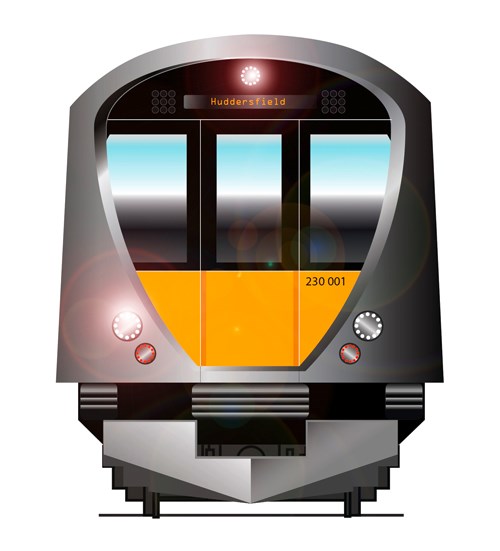
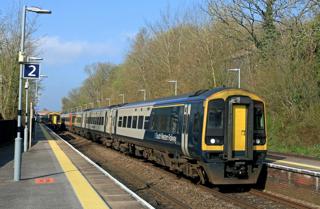
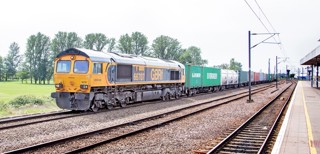
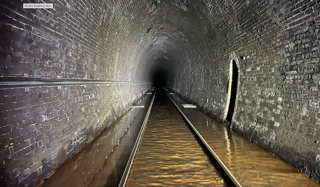
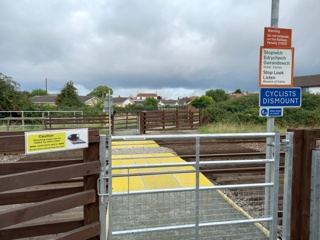












barry buttigieg - 27/07/2016 16:32
the sooner these train run on the nuneaton-coventry arena line the better